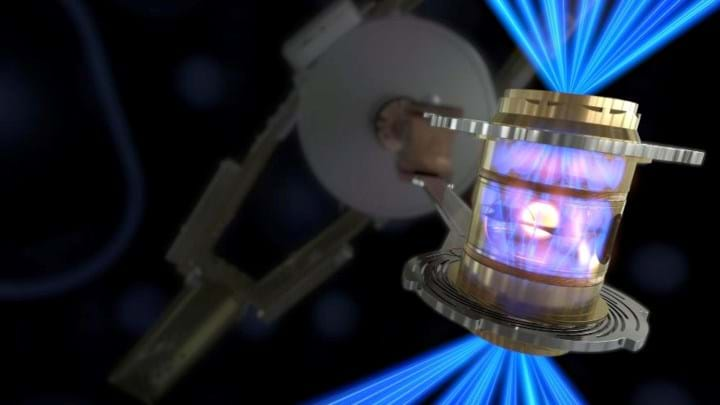US announces ‘major’ fusion breakthrough

Successful fusion ignition prompts call for more funding
RESEARCHERS at the US Department of Energy’s Lawrence Livermore National Laboratory (LLNL) have achieved a “major scientific breakthrough” that takes a step towards realising the clean and nearly unlimited fuel supply offered by fusion power.
In contrast to nuclear fission, which generates heat by splitting atoms, fusion releases energy when atoms are merged. Once commercially realised it could transform global power generation and help to achieve a lower carbon economy.
Taking us closer to that realisation, the US researchers have for the first time demonstrated fusion ignition, with a reaction experiment generating more fusion energy than was delivered to the target by lasers. Mark Herman, director for weapons physics and design at LLNL, said that 3.15 MJ of fusion energy was produced with a laser input of 2.05 MJ. It is worth noting that this input does not account for the energy required to power the lasers.
The milestone was achieved at LLNL’s National Ignition Facility (NIF), which uses a process called inertial confinement fusion. Jill Hruby, nuclear security undersecretary at the US Department of Energy (DOE), explained that during experiments 192 high-energy lasers converge on a target “about the size of a peppercorn” and heat a fuel capsule of deuterium and tritium to more than 3,000,000°C, briefly simulating the conditions of a star.
The process fundamentally differs from more advanced magnetic fusion, as is being developed through tokamak technologies. However, LLNL Director Kim Budil said these different communities could “feed off each other” which will help to advance the field and technologies in addition to power plants.
“We have taken the first tentative steps in a clean energy source that could revolutionise the world,” said Hruby.
Hurdles to overcome
Though the achievement was an important fundamental step towards an inertial confinement fusion power scheme, Budil acknowledged that there are still science and technology hurdles to overcome. Additional work she noted includes simplifying the process and making it more repeatable, and achieving ignition more than once in a day.
Budil recognised that commercialisation of fusion power is likely still decades away, but added that it isn’t five decades away, as is usually stated.
“It’s moving into the foreground and probably with concerted effort and investment, a few decades of research on the underlying technologies could put us in a position to build a power plant.”
Jeremy Chittenden, plasma physics professor at Imperial College London, who contributed to NIF’s work, said this news “proves that the long sought-after goal, the ‘holy grail’ of fusion, can indeed be achieved.”
“To turn fusion into a power source we’ll need to boost the energy gain still further. We’ll also need to find a way to reproduce the same effect much more frequently and much more cheaply before we can realistically turn this into a power plant.”
This article is adapted from an earlier online version.
Recent Editions
Catch up on the latest news, views and jobs from The Chemical Engineer. Below are the four latest issues. View a wider selection of the archive from within the Magazine section of this site.




